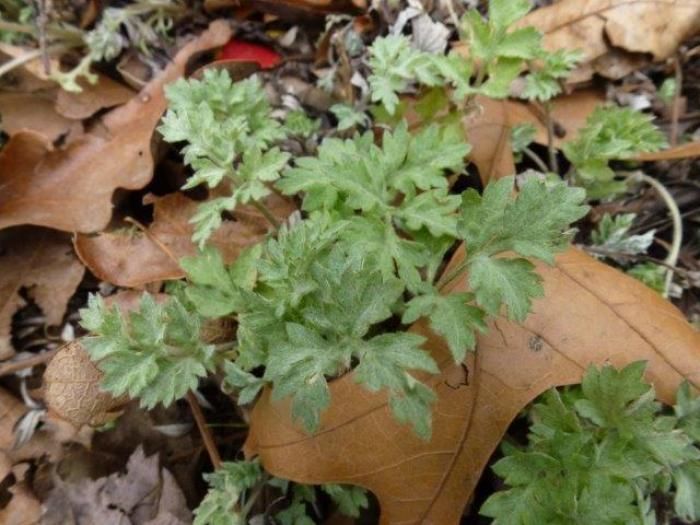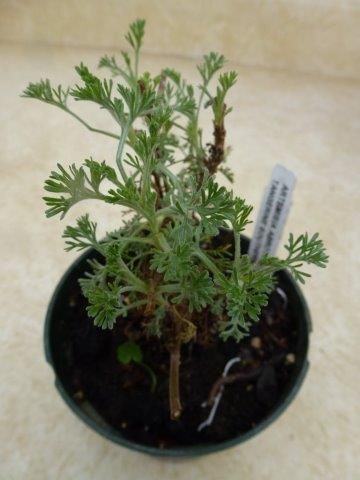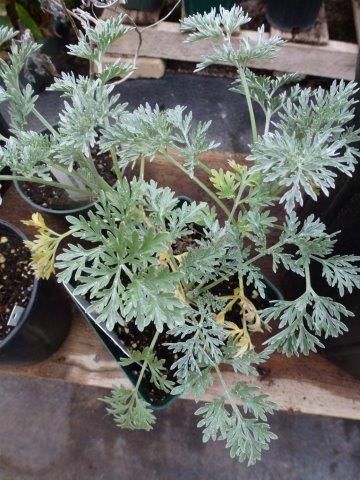
Artemisia is herb of the year for 2014 and I am gearing up for growing them in my garden. Next weekend is the Medicinal Herb Fieldtrip and Workshop at the Ozark Folk Center, where I will be giving a program on the medicinal aspects of some artemisias… here are a few excerpts from my handout for the program. Why don’t you try growing a few of these easy-to-grow plants? Celebrate Artemisia!
There are over 300 species of artemisia-most are herbaceous perennials-though there are some that are annuals, biennials and even subshrubs. These members of the Asteraceae are found in the wild in northern temperate areas, South Africa and South America; many of these plants are invasive. Most artemisias are recognized by their bitter smell and taste, which is due to the presence of thujone, which is a constituent of the volatile oil. Bitter herbs stimulate the digestive tract-they cause the gastric juices to flow-which aids in digestion. Bitterness discourages browsing herbivores. However, there are exceptions like sweet Annie and French tarragon, which have much sweeter aromas due to other dominant chemical constituents and lack of thujone.
A. abrotanum Southernwood
This perennial herb, called garderobe meaning “closet” in French, has long been cultivated for its purported ability to repel moths and insects, as well as contagion. It was used in tussie mussies (little nosegays) and carried outdoors and while traveling to protect from disagreeable odors and infections; it was even used in courtrooms, along with rue, to protect the public from catching jail fever from those kept in prison. It has been used to expel worms and to alleviate coughs and congestion. In the past in Europe, the new growth of bitter shoots and leaves were harvested to flavor confections, beer and tea.
A. absinthium Wormwood
This is the artemisia of infamy due to its use in absinthe. Sometimes referred to as grand or greater wormwood, its Latin name, absinthium was used in times of old. Long used as an anthelmintic, wormwood was taken internally to get rid of worms and parasites. Externally, it was applied to fungal infections like ringworm; it is still used as an antifungal today in preparations for athlete’s foot. The bitter flavor of wormwood has been employed in making beverages throughout history from bitters, beer, mead to many famous alcoholic spirits and liqueurs from absinthe and vermouth to Benedictine and Drambuie. Absinthe is a distilled spirit made with a high alcohol content (100-to 140- proof) traditionally flavored with the botanicals wormwood, anise and fennel, although different brands might add other herbs.
A. annua Sweet Annie
This annual artemisia is sometimes called annual wormwood, sweet wormwood or sweet Annie. It is fragrantly sweet and much used ornamentally to make wreaths; a number of people have allergic reactions to it when exposed to it for any length of time. Although it has been used for centuries in the East as an anti-malarial, in the 70s, Chinese studies revealed that this herb, contains artemisinin which has been studied and tested since then and has been found to be as effective as quinine in fighting malaria, especially against drug-resistant strains. It is being actively used in Africa and Asia.
A. dracunculus ‘Sativa’ French Tarragon
Although we think of tarragon as a culinary herb-and it is the star of French cuisine-it has a long history as a healing plant. It was often used to cure poisonous bites and stings. According to Dr. James Duke, tarragon has 72 potential cancer preventatives. The main anti-cancer chemical in this artemisia is caffeic acid, which helps the body get rid of damaging free radicals and also has the capacity to kill some viruses, it is an analgesic and anti-inflammatory. Dr. Duke states, “Caffeic acid is one ingredient in tarragon I would seek if I were looking to prevent cancer, flu or herpes.”
A. vulgaris Mugwort
This fast growing, and spreading perennial should not be placed in the herb garden; it should be put in a spot where it can spread-at the outer perimeter of the garden or woods-since it will take off and become invasive. The leaves have been used in many cuisines: it is often used with fatty foods like duck, geese and pork. Leaves and flowers have been added to beer and used as tea. Leaves are cooked as used as a potherb in Japan and added to other dishes. It is a digestive and relieves gas and constipation. It was also used as a nervine and made into dream pillows. A beneficial women’s herb-it can used in the bath with other fragrant herbs-women drank the tea to regulate their cycles. In times of old, mugwort was planted along roadsides, so soldiers and travelers could pick the leaves and put them in their shoes as it was reputed for soothing sore feet. Dried leaves are burned to repel mosquitoes and other insects. They are also dried and rolled into smudge sticks and burned as a smudging ceremony to raise the spirits.
Besides the aforementioned, here are a few artemisias for the ornamental garden. The silver, grey-green foliage and leaf textures and shapes look wonderful with green-leaved herbs and show off every color of flower bloom.
A. abrotanum ‘Tangerine’
A. ludoviciana ‘Silver King’
A. ludoviciana ‘Silver Queen’
A. ludoviciana ‘Valerie Finnis’
A. stelleriana Beach wormwood
A. ‘Powis Castle’
Check out the artemisias for your garden this year!
Fine Gardening Recommended Products

Ho-Mi Digger - Korean Triangle Blade
Fine Gardening receives a commission for items purchased through links on this site, including Amazon Associates and other affiliate advertising programs.

A.M. Leonard Deluxe Soil Knife & Leather Sheath Combo
Fine Gardening receives a commission for items purchased through links on this site, including Amazon Associates and other affiliate advertising programs.

Gardener's Log Book from NYBG
Fine Gardening receives a commission for items purchased through links on this site, including Amazon Associates and other affiliate advertising programs.























Comments
Log in or create an account to post a comment.
Sign up Log in